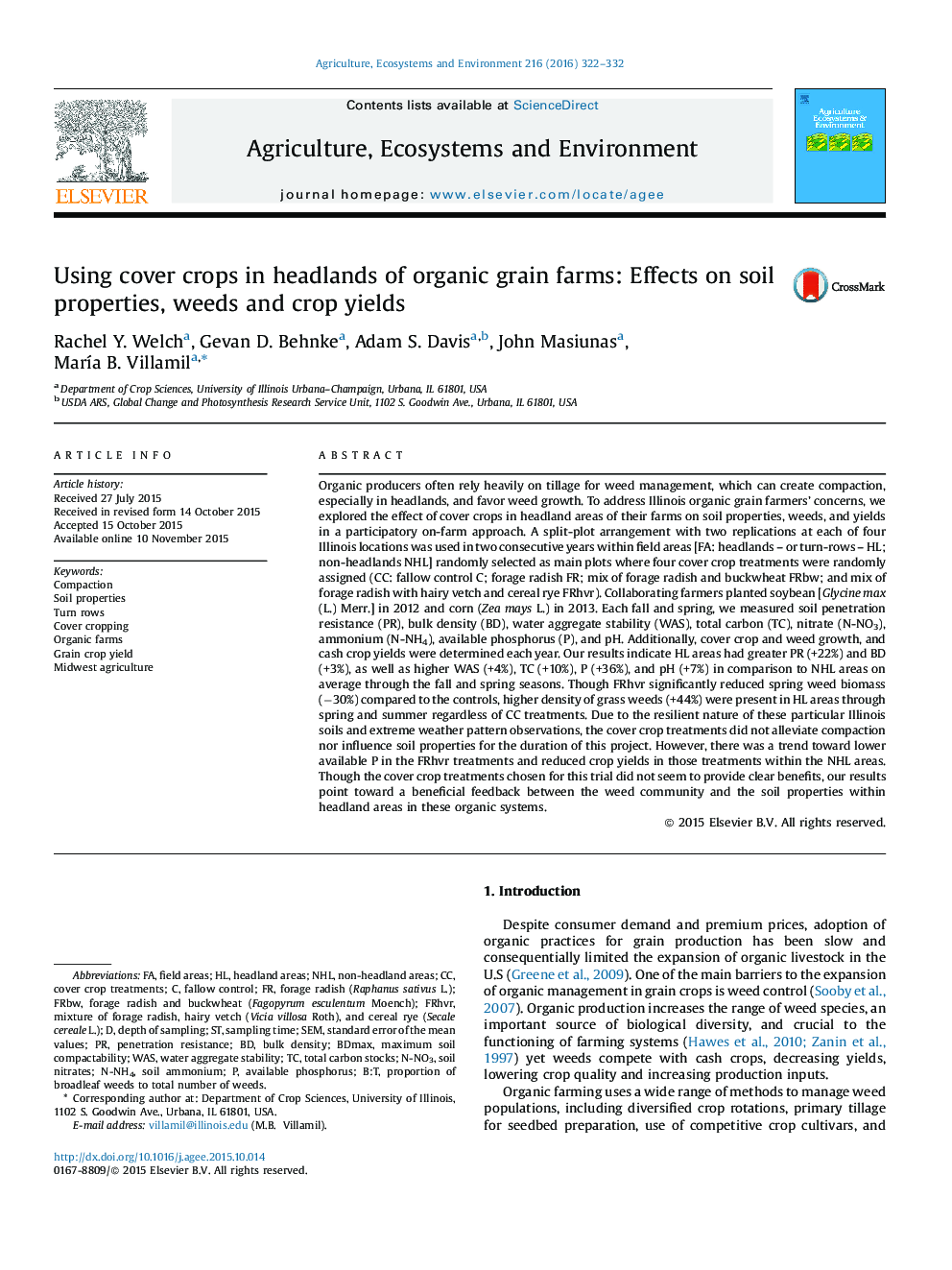| Article ID | Journal | Published Year | Pages | File Type |
|---|---|---|---|---|
| 2413655 | Agriculture, Ecosystems & Environment | 2016 | 11 Pages |
•Participatory study tested cover crops (CC) in organic farms’ headlands (HL).•HL areas had greater PR and BD, and WAS, TC, P, and pH compared to NHL areas.•HL areas had more weeds through the year and more grass weeds than NHL areas.•CC did not alleviate soil compaction but overwintering CC improved P retention.•Overwintering CC did suppress weeds yet potentially reduced cash crop yields.
Organic producers often rely heavily on tillage for weed management, which can create compaction, especially in headlands, and favor weed growth. To address Illinois organic grain farmers’ concerns, we explored the effect of cover crops in headland areas of their farms on soil properties, weeds, and yields in a participatory on-farm approach. A split-plot arrangement with two replications at each of four Illinois locations was used in two consecutive years within field areas [FA: headlands – or turn-rows – HL; non-headlands NHL] randomly selected as main plots where four cover crop treatments were randomly assigned (CC: fallow control C; forage radish FR; mix of forage radish and buckwheat FRbw; and mix of forage radish with hairy vetch and cereal rye FRhvr). Collaborating farmers planted soybean [Glycine max (L.) Merr.] in 2012 and corn (Zea mays L.) in 2013. Each fall and spring, we measured soil penetration resistance (PR), bulk density (BD), water aggregate stability (WAS), total carbon (TC), nitrate (N-NO3), ammonium (N-NH4), available phosphorus (P), and pH. Additionally, cover crop and weed growth, and cash crop yields were determined each year. Our results indicate HL areas had greater PR (+22%) and BD (+3%), as well as higher WAS (+4%), TC (+10%), P (+36%), and pH (+7%) in comparison to NHL areas on average through the fall and spring seasons. Though FRhvr significantly reduced spring weed biomass (−30%) compared to the controls, higher density of grass weeds (+44%) were present in HL areas through spring and summer regardless of CC treatments. Due to the resilient nature of these particular Illinois soils and extreme weather pattern observations, the cover crop treatments did not alleviate compaction nor influence soil properties for the duration of this project. However, there was a trend toward lower available P in the FRhvr treatments and reduced crop yields in those treatments within the NHL areas. Though the cover crop treatments chosen for this trial did not seem to provide clear benefits, our results point toward a beneficial feedback between the weed community and the soil properties within headland areas in these organic systems.
